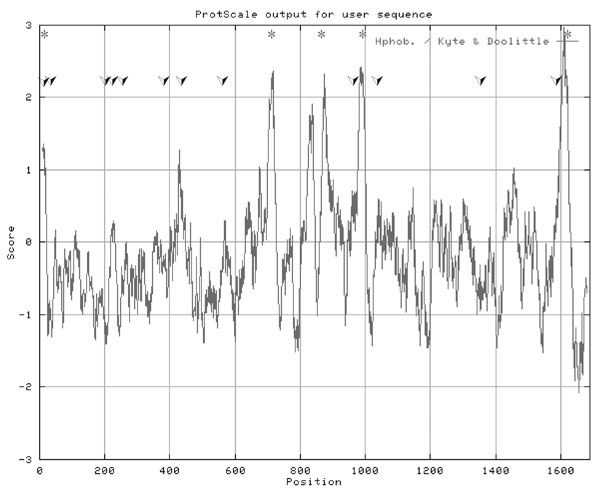Volume 8, Number 1—January 2002
Research
Genetic Characterization of the M RNA Segment of Crimean Congo Hemorrhagic Fever Virus Strains, China
Figure 1

Figure 1. Hydropathy plot of the Crimean Congo hemorrhagic fever virus (CCHFV) strain BA66019 M segment open reading frame representing 1689 amino acids. Twelve potential N-linked glycosylation sites are indicated with an asterisk (*). The plot was constructed by the method of Kyte and Doolittle (1982) with a window size of 21. Hydrophobic residues appear above the line and hydrophilic residues below the line. Five strongly hydrophobic regions are marked (_).
Page created: July 14, 2010
Page updated: July 14, 2010
Page reviewed: July 14, 2010
The conclusions, findings, and opinions expressed by authors contributing to this journal do not necessarily reflect the official position of the U.S. Department of Health and Human Services, the Public Health Service, the Centers for Disease Control and Prevention, or the authors' affiliated institutions. Use of trade names is for identification only and does not imply endorsement by any of the groups named above.